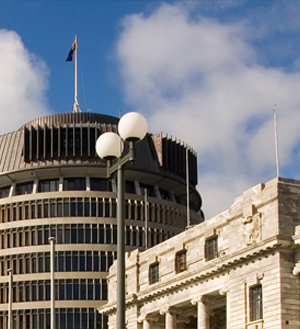The Government unveiled a raft of changes to New Zealand’s national direction, with details revealed on Thursday, 29 May 2025.
The Government has announced a series of proposed reforms to existing national direction as it relates to the primary sector, including with respect to forestry, aquaculture, food production, mining and quarrying. These changes form part of a wider overhaul of the resource management system, including replacing the Resource Management Act 1991 (RMA).
The Government considers that New Zealand’s primary sector has been hindered by overly complex and restrictive processes within the RMA and intends to boost productivity across the primary sector by reducing ‘red tape’ and improving regulatory clarity to drive exports while maintaining environmental outcomes.
Key issues and amendments
National Environmental Standards for Commercial Forestry
Forestry is one of New Zealand’s key economic sectors, and the Government is proposing amendments to the National Environmental Standards for Commercial Forestry (NES-CF) intended to reduce regulatory inefficiencies, improve certainty and consistency, and support growth in the sector. Key issues include inconsistencies with regional rules, impractical management requirements and drafting errors. Key amendments aim to:
• Improve certainty and consistency for the sector by amending the circumstances where the council can introduce more stringent rules than the NES-CF.
• Address concerns with current permitted activity standards that require slash to be removed from the cutover, by requiring a slash mobilisation risk assessment to identify slash management actions based on risk; and/or by changing the size and volume thresholds in the current regulations.
• Removing duplicate requirements for management plans by removing the requirement for afforestation and replanting plans.
New Zealand Coastal Policy Statement
The New Zealand Coastal Policy Statement guides the management of the coastal environment. The Government suggests that current coastal protection policies can overly restrict development. Key amendments are intended to:
• Enable coastal activities by making the relevant policy more directive, especially for priority activities such as infrastructure, ports and aquaculture.
• Broaden the “functional need test” within the relevant policy to include the “operational need,” allowing for more activities to justify use of the coastal marine area.
• Support aquaculture development by amending the relevant policy to direct decision-makers to provide for aquaculture activities within aquaculture settlement areas.
• Recognise cultural and environmental benefits of aquaculture by removing “social” from the relevant policy to include “cultural.”
National Environmental Standards for Marine Aquaculture
The review of the National Environmental Standards for Marine Aquaculture (NES-MA) found that current processes were overly restrictive and inefficient. Key amendments aim to:
• Simplify reconsenting by allowing marine farmers to change their structures when applying for a replacement consent without also having to change species and remove unnecessary restrictions on catching spat in existing farms.
• Expand consent eligibility so that all farms – not just those consented before the NES-MA 2020 came into force – can access replacement consents under the NES-MA.
• Streamline specific applications to change consent conditions by making them controlled activities – adding finfish, spat, indigenous bivalve specifies and Pacific oysters, indigenous seaweed species and Undaria pinnatifida (an invasive seaweed) to existing consents.
• Better enabling research consents with amendments making placing structures with no livestock in the coastal marine area a permitted activity.
National Policy Statement for Highly Productive Land
The National Policy Statement for Highly Productive Land (NPS-HPL) protects fertile land for agriculture, but the Government is concerned that the inclusion of Land Use Capability (LUC) 3 land limits housing development. Key amendments aim to:
• Remove LUC 3 land as the Government considers it captures too much land and limits the supply of land for housing.
• Introduce Special Agricultural Areas to safeguard key food-producing regions like Pukekohe and Horowhenua that may be affected by the LUC 3 removal.
• Maintain restrictions for LUC 1 and LUC 2 as fertile productions areas.
• Extending or suspending highly productive land mapping requirements by two to three years or until the implementation of the replacement resource management system.
Mining and quarrying provisions
The Government intends to align terminology and consent pathways across national direction instruments to support mineral exports, while maintaining environmental protections. Key amendments include:
• Changes to terminology across policies and to the National Policy Statement on Indigenous Biodiversity and NPS-HPL:
o Removes the requirement for the benefit to be to the “public” (allowing any benefits to be considered);
o adds the consideration of “regional benefits” to the mining consent pathway; and
o removes “could not otherwise be achieved using resources in New Zealand.”
• Adding “operational need” as a gateway test to the existing “functional need” gateway test for mining and quarrying in wetlands in the National Policy Statement on Freshwater Management and National Environmental Standards for Freshwater Management.
Stock Exclusion Regulations
The Government intends to amend the requirement that all stock must be excluded from any natural wetlands that support a population of threatened species, so that it would not apply to non-intensively grazed beef, cattle, and deer.
Consultation and implementation
The primary Government is actively seeking feedback on these proposals until 27 July 2025.
This includes feedback on whether iwi, hapū and other Māori groups have concerns about the proposal or any perceived impacts on sites of significance to Māori, marae, Māori land, land returned under Treaty settlements, or other matters of significance to Māori groups, though feedback is generally not limited to this area.
Implementation will be both non-statutory, through guidance developed after public feedback, and statutory, through legal requirements for councils and decision-makers. Generally, national environmental standards and national policy statements take effect immediately, with plan changes required to implement national policy statements undertaken “as soon as practicable”. The Government is consulting on alternative implementation options to this requirement, including that amendments be made within a five-year timeframe, or that full implementation takes place with, or before, plan reviews.
If you have any questions about the matters raised in this article, please get in touch with the contacts listed or your usual Bell Gully adviser.
Disclaimer: This publication is necessarily brief and general in nature. You should seek professional advice before taking any action in relation to the matters dealt with in this publication.











